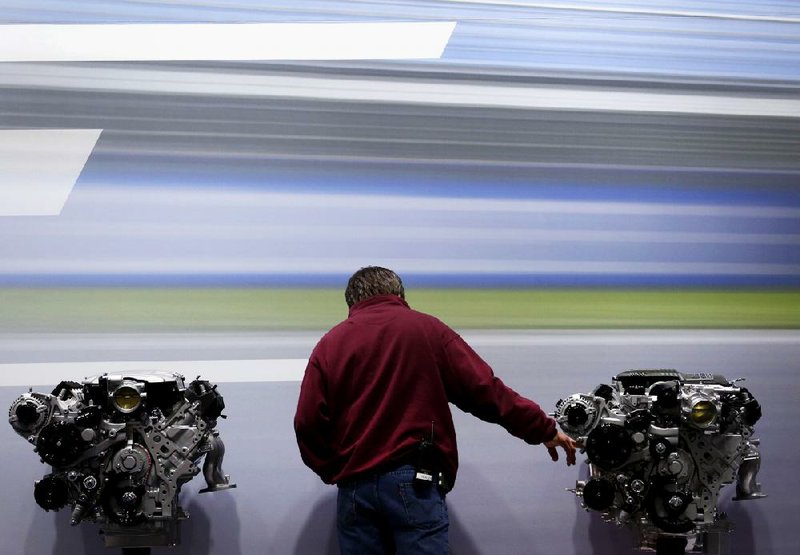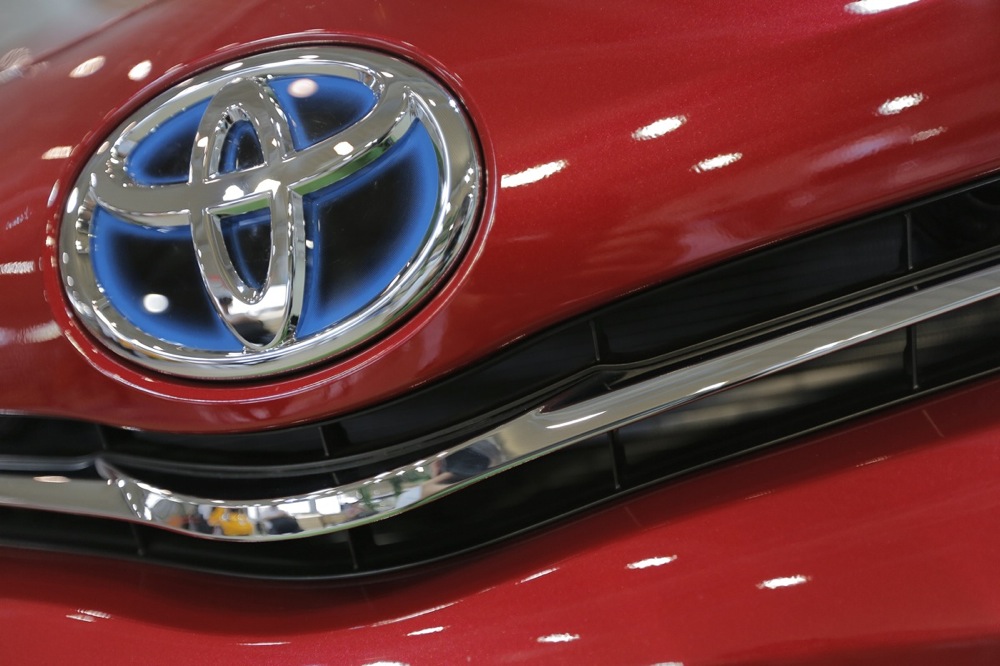DETROIT - General Motors Co. and a team of trial lawyers are preparing for a court fight over whether the automaker is liable for the sins of its corporate past.
The company is asking a U.S. bankruptcy court to shield it from legal claims for actions that took place before the company’s 2009 bankruptcy.
But lawyers who are suing GM say it shouldn’t get the usual benefits of bankruptcy protection because it concealed a deadly ignition-switch problem when the court was making bankruptcy decisions.
They also say the company’s motion is part of a broader strategy to force settlements in dozens of lawsuits alleging the ignition switches caused deaths and injuries.
Late Monday, GM filed a motion in New York asking the court to bar claims that GM small cars lost value because of the ignition-switch problem, which has led to the recall of 2.6 million older small cars worldwide and is linked to 13 deaths.
“Those types of claims were never assumed by New GM and are barred by the court’s sale order and injunction,” the company said. “New GM cannot be held liable for old GM’s alleged conduct, either directly or as old GM’s alleged ‘successor.’”
The company has admitted knowing about the ignition-switch problem for more than a decade, yet it failed to start recalling the cars until February to replace the defective switches.
The faulty switches can move unexpectedly from the “run” position to “accessory” or “off,” shutting down the engine and knocking out power-assisted steering and brakes. If that happens, steering can become difficult and drivers can lose control of the cars and crash. If the engine is off, the air bags won’t inflate.
GM is offering repairs with free rentals for customers who take their cars to dealers.
GM’s behavior has led to allegations of a cover-up from members of Congress, who earlier this month held hearings on the recall. The National Highway Traffic Safety Administration, the government’s road-safety watchdog, and the Justice Department also are investigating GM’s delayed recall.
The Detroit automaker contends in its motion that under the bankruptcy, which ended on July 10, 2009, assets and liabilities of the old General Motors Inc. were split in two, with good assets sold under court order to “New GM” and bad ones and most liabilities going to the “Old GM,” which was left behind.
Before GM exited bankruptcy in 2009, U.S. Bankruptcy Judge Robert Gerber freed it from most of its liabilities, leaving some warranty obligations, lemon-law claims and responsibility for accidents occurring after it reorganized. That order should be enforced to bar any plaintiff from suing over a drop in the value of an old GM vehicle, the company said.
“Plaintiffs assert claims for liabilities that, under the sale order and injunction, were retained by Old GM,” Monday’s motion states. It asks the court to dismiss about 50 class-action lawsuits seeking damage for lost car values, and for an order stopping similar new claims.
But Robert Hilliard, a lawyer who has several wrongful-death lawsuits pending against GM, said the motion is an implied threat to those who have filed such lawsuits against GM: Either settle or risk getting nothing because the company will argue that claims should go against the pre-bankruptcy GM, which has few assets.
GM has hired Kenneth Feinberg - who handled the fund for the victims of the Sept. 11, 2001, terrorist attacks, the Boston Marathon bombing and the BP oil spill in the Gulf of Mexico - to explore ways to compensate victims. No decision has been made yet on what GM will do.
“It’s completely strategic,” said Hilliard, of Corpus Christi, Texas, saying GM is telling customers they “better take the Feinberg money because there’s no telling what they’re going to do tomorrow.”
GM spokesman Jim Cain would not comment on Hilliard’s assertions. He said GM hasn’t decided on whether it will seek bankruptcy-court protection in the wrongful-death lawsuits from episodes that happened before bankruptcy. The motion filed Monday, he said, is focused solely on lawsuits alleging economic loss from a drop in value of the recalled cars. “We’ve acknowledged that there were accidents and injuries. That’s precisely why Feinberg has been retained,” Cain said.
After GM filed its motion, a group of trial lawyers concerned that the court will bar actions seeking damages quickly filed a lawsuit with the bankruptcy court that seeks class-action status. The lawsuit says that since GM knew about the defective ignition switches before its 2009 bankruptcy, it should have informed the court of its potential liability. The lawsuit also says GM can’t use the bankruptcy as a shield because the same employees worked for the company both before and after the bankruptcy.
The lawsuit says GM is claiming that its malfeasance can’t be challenged because of the bankruptcy, and that the government may not have bailed out the company had officials known about the ignition switches.
“GM’s argument suggests that the U.S. Government would have agreed to extend $40 billion of taxpayer money for GM’s restructuring, and supported shielding it from liability through the sale order, had it known of GM’s intentional misconduct,” the lawsuit stated.
Among those petitioning the court for damages are Dr. Steven Groman of Roslyn, N.Y., who bought a new Chevrolet HHR in 2008. The vehicle’s engine shut down four times while he was driving - including two times on the Long Island Expressway- before he traded it in at a loss in 2011. He didn’t learn about the defective switch until last month.
The lawsuit claims drivers like Groman overpaid for their vehicles, which were falsely advertised as safe, and that GM should compensate them.
A California lawsuit over the ignition defects was delayed Tuesday by a federal judge until Gerber, GM’s bankruptcy judge, decides how to proceed.
Freezing the case “will promote judicial economy, uniformity and consistency in decision making,” U.S. District Judge Jeffrey White in Oakland, Calif., said in a court filing. He denied a request by the California plaintiffs to make GM turn over internal reports and documents about the ignition switches.
GM asked a federal judge in Texas to postpone similar litigation.
Since the request, lawsuits seeking compensation from GM over the ignition switches have increased to 50 from about 37. Most seek to represent other plaintiffs.
Information for this article was contributed by Tom Krisher, Dee-Ann Durbin and Greg Katz of The Associated Press and by Linda Sandler and Karen Gullo of Bloomberg News.
Front Section, Pages 1 on 04/23/2014

